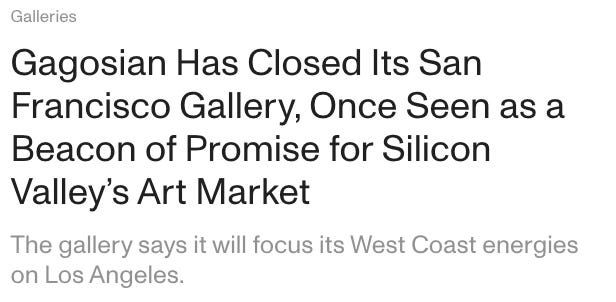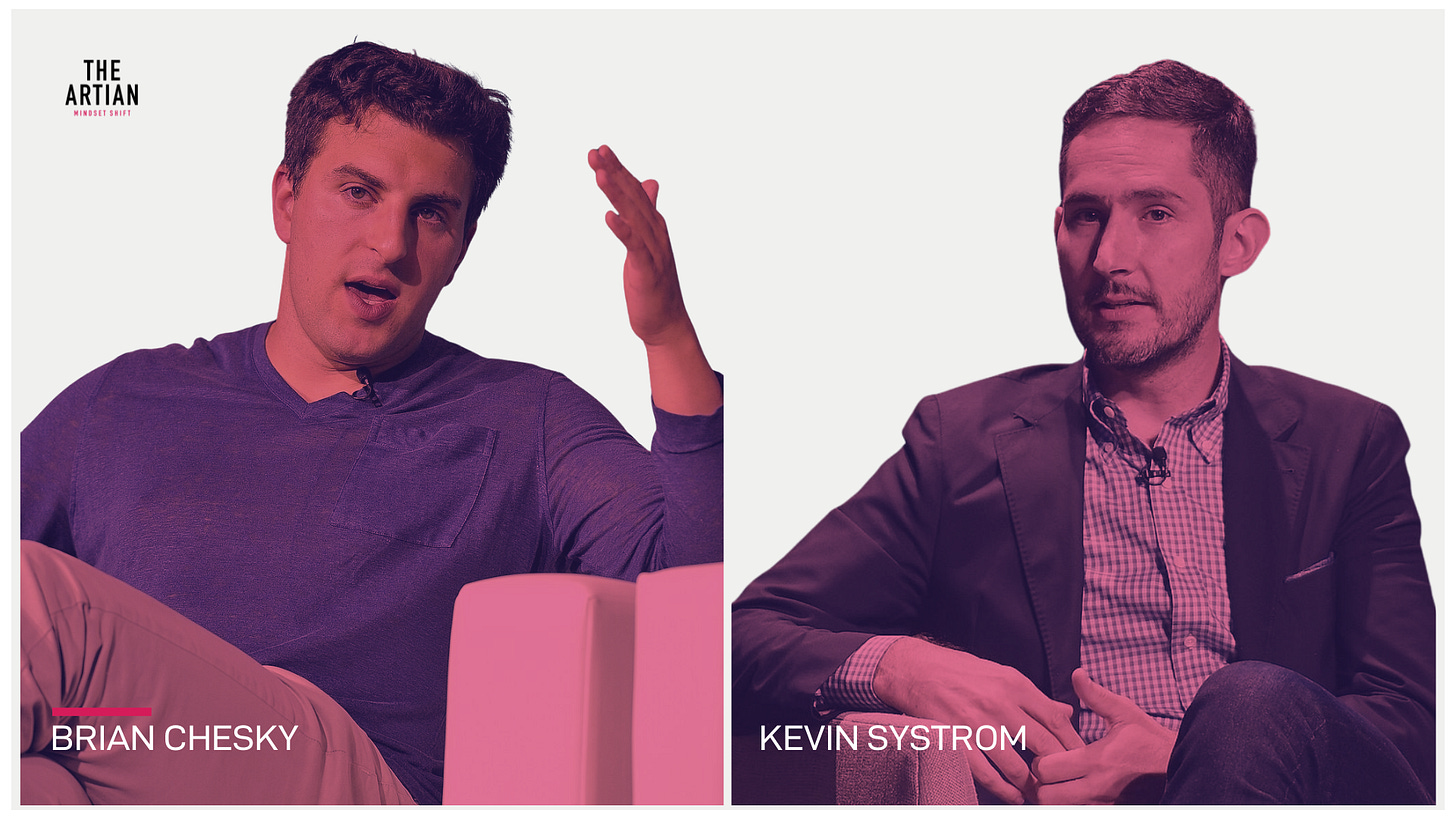I teach taste in my classes.
Not literally, of course. But we do take time to discuss it. Some of my students are surprised when, in my Business Artistry – How to Build Creative Companies class, I devote time to the subject of taste (and intuition—but that’s a topic for another post). Why discuss taste in a business school? Before I explain, let me tell you what sparked this week’s post.
A few weeks ago, I was listening to Chamath Palihapitiya, Jason Calacanis, and David Friedberg—aka The Besties—on their podcast All-In. If you’re not familiar, All-In is a business, technology, and politics podcast that offers sharp insights and often serves as a reflection of Silicon Valley culture itself. What caught my attention in this episode was their discussion about Apple’s taste—or, more precisely, its apparent loss of it.
Taste and the Silicon Valley Blind Spot
In Silicon Valley’s data-driven startup culture, taste is not in the everyday conversation; it might seen as irrelevant or unquantifiable. You can’t measure it, standardize it, or apply an algorithm to it. Developing taste requires engaging with human topics—the arts, music, architecture, and fashion—the very areas Silicon Valley tends to dismiss as impractical for building technology companies.
Have you ever wondered why San Francisco, despite being home to tech billionaires and world-changing innovations, lags behind the art scenes of New York City or Los Angeles? The explanation is systemic: less demand, less supply. Arts programs are cut, galleries are leaving, and artists are relocating. The arts are often deemed impractical or non-essential. In July 2022, the San Francisco Art Institute (SFAI)—a venerable institution with a 151-year history—closed its doors, marking a sobering symbol of the city’s shifting priorities. Gagosian Gallery, a prominent mega-gallery, also shuttered its San Francisco location in late 2020, choosing to focus on Los Angeles instead. Design has managed to survive because of its perceived utility in product development, but broader cultural investment remains scarce.
And yet, artists who operate here often do so against the odds. For this, I admire them—they create in an environment that doesn’t always support them, and their persistence is a quiet act of rebellion.
And when the arts and humanities are missing, even in technology, you notice.
On the podcast, the hosts debated Apple’s current trajectory. It was interesting for me because even in Silicon Valley, people are beginning to recognize that the absence of taste leads to inferior products. “There is no arbiter of taste anymore who is the backstop,” Jason observed, referencing the autocratic managerial style of Steve Jobs.
But I think they’re missing something. It wasn’t just Jobs’ leadership or his unapologetic approach to management—it was his profound belief that:
“Technology alone is not enough. It is technology married with the liberal arts and the humanities that yields us results that make our hearts sing.”
He said it over and over again.
Who Has Taste?
At one point in the conversation, venture capitalist Keith Rabois, a guest on the podcast, posed an interesting question:
"How many people in the world really have cutting-edge technology user experience taste? I don't know too many. I would fund them right away. Brian Chesky might have it."
Chesky, of course, is the co-founder of Airbnb. What makes his inclusion significant? He isn’t a typical Silicon Valley founder. He studied fine art at the Rhode Island School of Design. He used to draw as a kid; he is passionate about art, and he understands the power of the arts—not just as inspiration but as a fundamental driver of business leadership and, more precisely, product development. Taste, as the hosts acknowledged, creates economic value.
Rabois continued:
"Instagram had taste at the time. Kevin had taste."
Kevin is Kevin Systrom, Instagram’s co-founder. While he studied engineering, he had a deep appreciation for art and design. In high school, he was president of the photography club. At Stanford, he spent a term in Florence studying photography, transitioning from a Nikon to a Holga—a plastic camera known for its square-format images. That artistic sensibility directly shaped Instagram’s original aesthetic.
Rabois then posed another compelling question:
"Think where Meta would have been if they couldn't acquire Instagram."
It’s an interesting thought experiment. Meta is an engineering company; taste has never been its strength. Instagram, however, was built on aesthetic sensibility. By acquiring it, Meta gained the taste it lacked, transforming the platform into a more desirable product for users—and boosting its bottom line. By early 2024, Instagram had two billion monthly active users and is projected to generate $32 billion in U.S. ad revenue by 2025, accounting for over half of Meta’s ad revenue. Creativity didn’t just enhance user experience—it became a key driver of financial success. So who said creativity can’t be measured? 😉
Now, it’s not me saying Meta doesn’t have a taste. Chamath, a former Facebook executive, seemed to recognize this himself when he commented:
"Actually, we had so much scaffolding around data probably because, intuitively, we knew that that was way more reliable for us."
This implies that they needed to rely on data to develop the product—not on taste. It reveals something fundamental about Silicon Valley’s approach to decision-making. In an environment dominated by engineers, data is seen as objective, measurable, and predictable. Taste, by contrast, is subjective and difficult to quantify. Data provides a sense of certainty. Companies that lack taste—whether by design or necessity—build layers of data-driven systems to optimize user engagement, predict behaviors, and reduce reliance on intuition.
So it should make sense when Rabois said:
"If you don’t have taste, you rely on data."
Data offers certainty in an environment where taste cannot be quantified, according to Rabois. This is what, apparently, happened at Facebook. Chamath’s admission shows that Facebook relied heavily on data because it lacked the creative instincts to guide user experience purely through intuition and taste.
But here’s the problem: if you over-index on data, you don’t develop taste—you eliminate it. When every decision is based purely on numbers, you end up with products that look the same, feel the same, and function the same. There’s no artistic differentiation—only statistical optimization.
That’s why I differ from Rabois’ suggestion that data is an effective substitute for taste. If data is your only guide, you end up with a market filled with identical products—same features, same look, same feel. Worst, you might end up as a market follower, not a market leader.
It reminded me of something Mickey Drexler once said in an interview. If you grew up in the ’90s, you know that the coolest brand back then was GAP. They understood culture, music, art, and fashion. Drexler, the man who took GAP to new heights, was asked about data’s role in creativity. His response?
"Data doesn’t design products. Data isn’t creative. Data has no emotion. It doesn’t take into consideration any instinct or gut feeling."
Take it from someone who was able to bring a company to a market capitalization of approximately $43.4 billion—this is a retailer we are talking about, not a digital product.
Here’s a small anecdote for you: When Jobs set out to build Apple retail stores in 1997, he needed someone who could seamlessly merge culture, branding, and values. Who did he bring onto Apple’s board to help? Drexler, who served for 16 years and played a key role in shaping the iconic stores we know today.
Listen from minute ~49:00
The Role of Taste in Business and Innovation
I’m not against data, nor am I claiming that all engineers lack taste. But it’s crucial to remember that data only reveals the past and present. A lack of taste, however, comes from failing to cultivate it through exposure to art, culture, and the humanities—things that data alone can’t teach us.
So why do I discuss taste in my classes? Because it’s one of the few things that differentiates us from machines. More importantly, I believe it’s essential to building great companies.
One thing I’ve noticed about artful founders—those who embody business artistry—is that they have taste. And they make sure to hone and develop it. Edwin Land did it at Polaroid. Erwin Braun and Dieter Rams did it at Braun. Walt Disney did it. Jimmy Iovine at Beat did it. How? They immersed themselves in culture. They listened to new music, explored avant-garde art, and paid attention to the world beyond their industries.
As Steve Jobs famously put it:
"It comes down to trying to expose yourself to the best things that humans have done and then try to bring those things into what you're doing."
Engineering alone won’t give you that. AI won’t give you that.
Jobs knew this, and he made sure to assemble the right people. "Part of what made the Macintosh great was that the people working on it were musicians and poets and artists and zoologists and historians," he said.
And you know what these founders did if they thought they didn’t have it? They collaborated with artists and creatives. They didn’t rely on data to develop their taste.
So, back to the classroom and my philosophy—we dedicate time to discussing how to develop taste. Because here’s the thing: if you don’t know what you love, what you admire, what you appreciate—if you don’t know what moves you—how can you possibly create something that moves me, the customer?
Too often, I use software and wonder, What was the developer even thinking? This is so unhuman. (Looking at you, 👉🏼 PowerPoint.)
And this is what made Steve Jobs great. He understood that the iPhone, iPad, or iPod were not just technology products—they were human artifacts. To create a great human artifact, you need to understand what evokes emotion and what is essential to being human.
As Rabois said at one point in the podcast, 'You don’t need a dictator, but you do need taste. And taste is artistic.'
So, instead of over-relying on data, maybe it’s time to integrate more of the arts, humanities, fashion, architecture, and music into engineering and business studies—the very things that cultivate taste.
Because taste isn’t just about aesthetics—it drives economic value. Without it, we’re left with products that are functional, but forgettable.
Ezra Klein had an engaging conversation with Kyle Chayka on how to cultivate your own taste—definitely worth a listen.
Last Thoughts:
If you enjoy Business Artisty and think a friend or a colleague can benefit from it, tell them about it by sharing it.
I’d love to hear from you! Whether it's your thoughts, suggestions, critiques, or even cool stories and ideas, feel free to drop me a note at nir [at] theartian.com or use the comments.
Thanks for reading.
Nir
Just a heads-up: Some links might be Amazon affiliate links.







I think that the big techs do not ignore the taste by not serving it. They have decided to actually make us have a certain taste. Funny enough, the desired taste fits their biz model
In Act 2, Scene 2, Hamlet says: "What a piece of work is a man! how noble in reason!
how infinite in faculty! in form and moving how
express and admirable! in action how like an angel!
in apprehension how like a god! the beauty of the
world! the paragon of animals! And yet, to me,
what is this quintessence of dust?" Without taste and artistry, data is dust. It must be infused with soul to connect with people. Customers are people, after all, not just numbers.